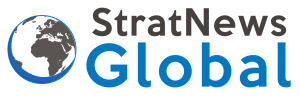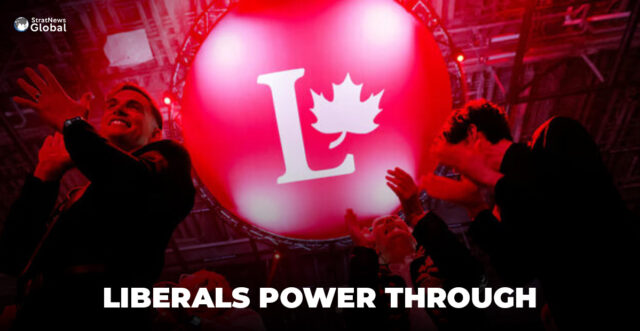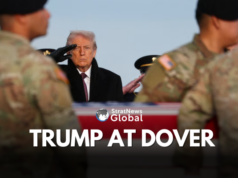Canada’s ruling Liberals held onto power in Monday’s election, though it remains unclear if they’ve secured a majority, according to CTV News and CBC.
Prime Minister Mark Carney had asked for a strong mandate to help him handle U.S. President Donald Trump’s tariffs and annexation threat, but CTV and CBC said the Liberals had not yet secured the 172 electoral districts, known as seats, they needed for a majority.
The size of the Liberal government might not be known for some time and could depend on the westernmost province of British Columbia, where polls closed last.
The Liberals were leading or elected in 139 seats, followed by the Conservatives with 107, according to CBC.
The Minority Govt Conundrum
Carney had promised a tough approach with Washington over its tariffs and said Canada would need to spend billions to reduce its reliance on the U.S. But the right-of-center Conservatives, who called for change after more than nine years of Liberal rule, showed unexpected strength.
The House has 343 seats and if Carney only captures a minority, he will have to negotiate with other parties to stay in power. Minority governments in Canada rarely last longer than 2-1/2 years.
The result, though, capped a notable comeback for the Liberals, who had been 20 points behind in the polls in January before unpopular former Prime Minister Justin Trudeau announced he was quitting and Trump started threatening tariffs and annexation.
Did Trump Set Up The Win For Liberals?
Trump’s threats ignited a wave of patriotism that swelled support for Carney, a political newcomer who previously led two G7 central banks.
Trump re-emerged as a campaign factor last week, declaring that he might raise a 25% tariff on Canadian-made cars because the U.S. does not want them. He said earlier he might use “economic force” to make Canada the 51st state.
Carney has emphasized that his experience handling economic issues makes him the best leader to deal with Trump, while Conservative leader Pierre Poilievre has tapped into concerns about the cost of living, crime and a housing crisis.
Trump, in a social media post on Monday, reiterated his call for Canada to become the 51st state.
“Good luck to the Great people of Canada,” he said. “Elect the man who has the strength and wisdom to cut your taxes in half, increase your military power, for free, to the highest level in the World, have your Car, Steel, Aluminum, Lumber, Energy, and all other businesses, QUADRUPLE in size, WITH ZERO TARIFFS OR TAXES, if Canada becomes the cherished 51st. State of the United States of America. No more artificially drawn line from many years ago.”
The last party to win four consecutive elections in Canada was the Liberals, in 2004.
The result was a huge defeat for Poilievre, who focused his campaign on domestic issues and the need to fix a country the Liberals had “broken.”
Neither the Carney nor Poilievre camp was immediately available for reaction to the CTV and CBC forecasts.
(With inputs from Reuters)





